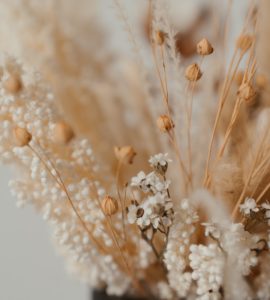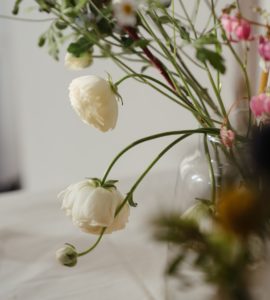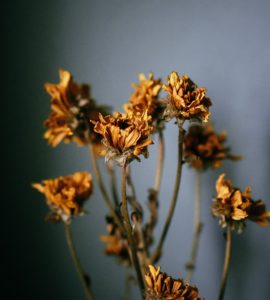1.General rules for drying flowers
2.Air drying
3.Press drying
4.Volume Drying
5 how to beautifully dry flowers in the microwave
6 how to dry flowers so they retain their color
The beauty of flowers can be admired not only in those few days that they spend in a vase: knowledge of the technique of drying plants allows you to preserve their attractiveness, color and even aroma for many months after receiving the bouquet. Drying allows you to turn flowers from an impractical gift into a dear souvenir, reminiscent of an important day or a pleasant event.
Dry bouquets are used in handicrafts, arts and crafts, or in interior design. Drying the composition may not have a specific purpose and may simply be due to the desire to keep a significant gift (a bouquet presented for discharge from the hospital, wedding or engagement flowers) as a keepsake.
There are many drying methods, each with its own advantages and disadvantages and may only be suitable for certain types of plants. After studying them, you will learn how to dry flowers one by one or in ready-made compositions.
1.Choose dry plants with clean leaves and strong, healthy buds, free of stains, foreign inclusions and other signs of disease.
2.So that after drying the flowers do not look disheveled, choose specimens with half-closed inflorescences.
3. Start preparing immediately after receiving the plants, and if you collect the bouquet with your own hands, cut the flowers in the morning after the dew evaporates.
4.Cultures with large buds are best dried not in compositions, but one by one.
5. To reduce the risk of shedding dried plants, you can spray them with hairspray from a distance of 0.3-0.4 m. This will also help fix the petals in the desired position.
6.In the stems of plants with fragile buds, you can insert a metal wire so that after drying you do not touch the flower head.
Air, or passive, drying does not require the use of additional methods of exposure to plants and is divided into three types. The main advantage of this type of drying is its simplicity.
This method of drying allows you to get a herbarium – flat plant-impressions. Such drying is not suitable for bulky buds, but field crops with small inflorescences (for example, chamomile), dried under pressure, will look very impressive.
Before placing the flower under the press, lay it on the paper and spread the leaves and petals (to further fix them in the desired position, you can press the plant with your finger). Cover the flower with a second layer of paper and then press down with a press. Alternatively, you can put a live plant in the book.
Desiccants allow you to dry flowers with multi-layered buds: roses, peonies, lisianthus, ranunculus, as well as freesias, dahlias, hyacinths, orchids, lilies and lilacs. Moisture absorbers include flour, bulk cereals (corn, semolina, borax), silica gel, river sand, salt. Bulk drying involves separating the flower head from the stem. To obtain a whole plant after drying, at the stage of preparation, a piece of wire is inserted into the base of the bud.
At the bottom of a deep container, a layer of an absorber is laid, which should be the larger, the larger the dried bud.
The flowers are placed in a container with the base down, and a desiccant is carefully poured on top so that it fills the space between the petals.
The entire plant is covered with desiccant. Small buds dry for 2-4 days, large buds will need to spend a week in silica gel, two weeks in semolina, borax or flour, and up to three weeks in sand.
One of the fastest drying methods is exposure of flowers to microwave waves. Drying in a microwave oven is the best way to preserve plants with a large number of smooth petals: carnations, gypsophila, peonies, roses, dahlias, chamomiles. Florists do not recommend microwave drying crops with thick petals.
When drying a flower in the microwave, its stem must be cut so that 3-4 cm remain at the base of the bud. If this is not done, the dried inflorescence may crumble. Place the plant to be dried on a paper towel or container with a desiccant. Flowers, dried in a microwave oven with an absorbent, are left to cool in a container with a free-flowing substance overnight or for a whole day.
The denser the petals in the bud, the longer it will take to dry the flower: start with 2-3 minutes at medium power, and if necessary, increase the drying time and power of the appliance. Large flowers are dried for up to 7-8 minutes, checking the result with a toothpick. To dry small plants with delicate petals, use the defrosting mode.
After drying, some plants may change color: brown notes may appear in white tones, and red and purple buds turn black. In order for a dried flower to be used as a decoration, florists recommend exposing it to microwave waves by adding a container of water (for example, a cup) inside the microwave. This will reduce the risk of overdrying the bud and prevent color fading. Already dried plants can fade in the sun, so to maintain color, protect the flower from direct light.


